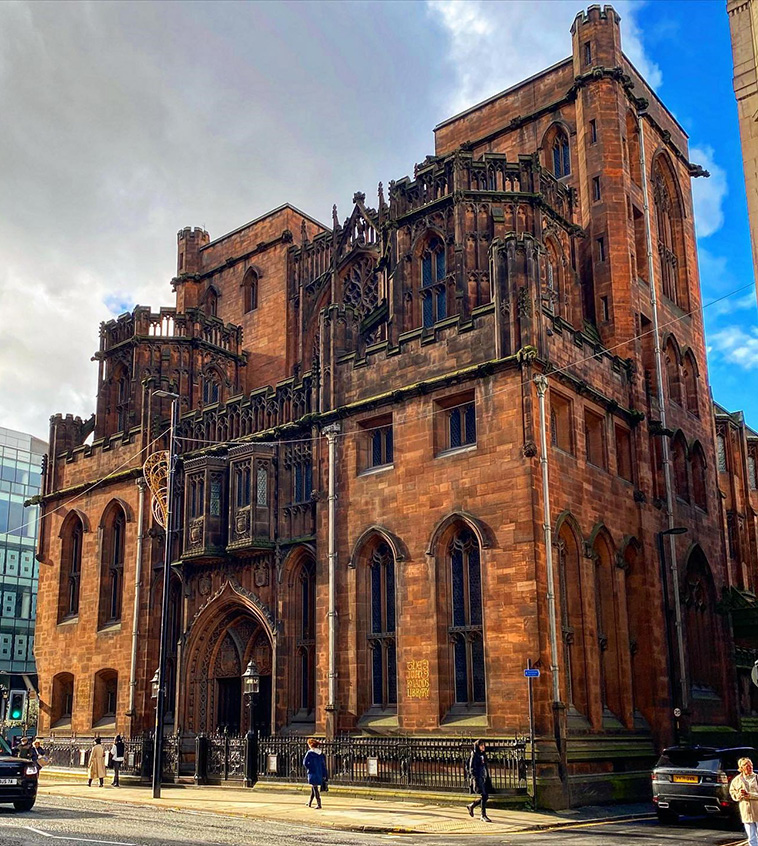John Rylands Library in Late-Victorian Neo-Gothic Style

The John Rylands Research Institute and Library was founded by Enriqueta Augustina Rylands in memory of her husband, John Rylands, in 1900. After purchasing a site on Deansgate in 1889, Mrs Rylands commissioned architect Basil Champneys to build the structure. She intended it to be a theological library in the appearance of a church. Later, this late-Victorian neo-Gothic structure merged with the library of the University of Manchester in 1972. It now houses the special collections of both the university and the library’s previous collection of rare books.
notsosecretmanchester
John Rylands Library has intricate decoration inside and outside in neo-Gothic style with additions of the Arts and Crafts movement. Champneys used Cumbrian sandstone for the construction, shaded ‘Shawk’ stone for the interior (varying in color between sand and pink), and dark red Barbary stone for the exterior. The structure was further ornated by lanterns, grotesque details, clerestory windows, lanterns, and sculptures. Furthermore, the library is also one of the first buildings to be completely lit by electricity. It even generated its own supply until 1950. Moreover, Champneys even developed an advanced air conditioning system by placing numerous air inlets on the ground floor and installing hessian screens to trap soot.
davez_uk
The Library’s special collection includes medieval texts, papers and letters of well-known figures like Elizabeth Gaskell an...
Source:
themindcircle
URL:
http://themindcircle.com/category/architecture/
| -------------------------------- |
| "Demolition is sometimes the best option" says Bartlett professor | Architecture | Dezeen |
|
|












